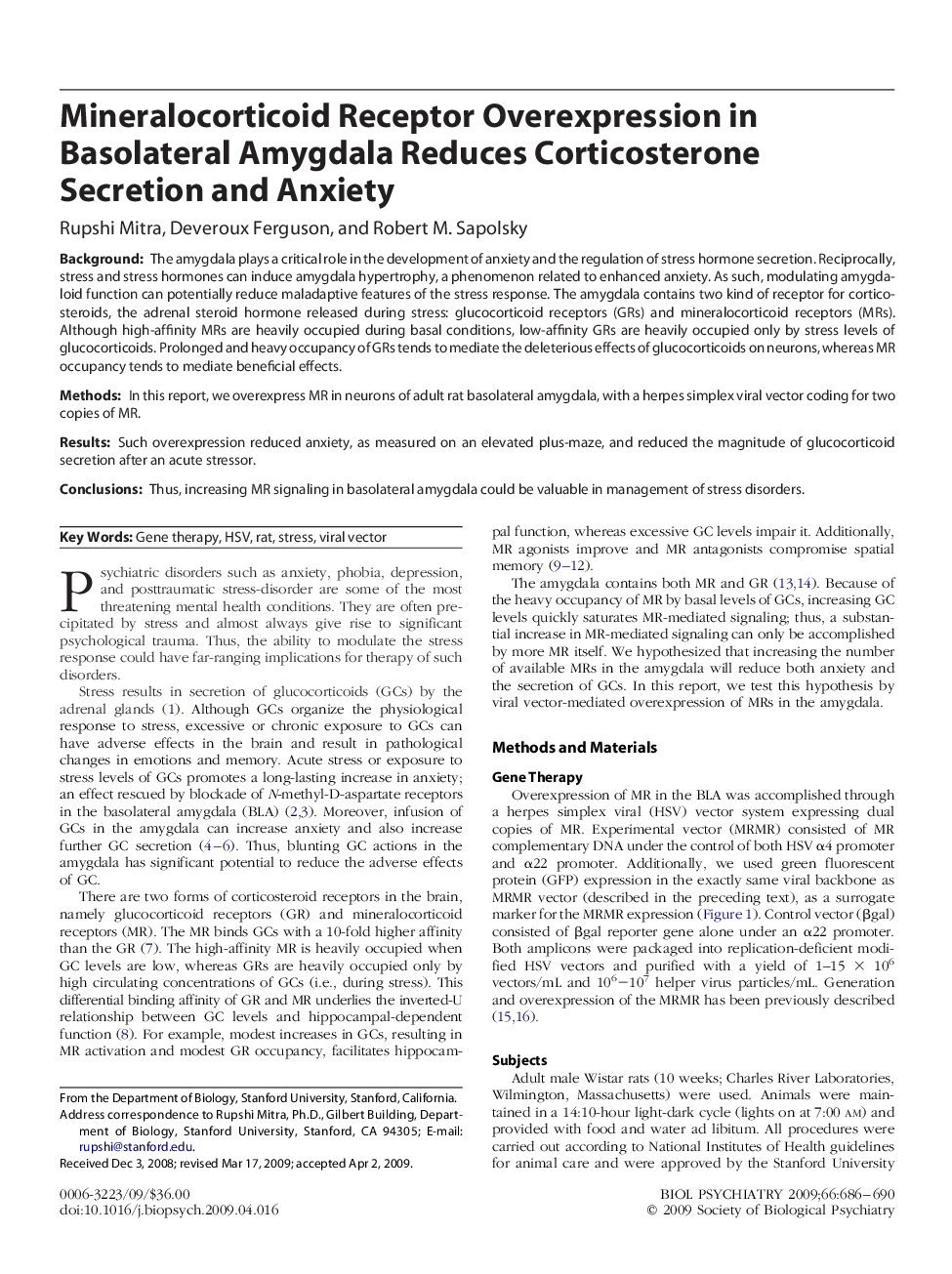| Article ID | Journal | Published Year | Pages | File Type |
|---|---|---|---|---|
| 4179309 | Biological Psychiatry | 2009 | 5 Pages |
BackgroundThe amygdala plays a critical role in the development of anxiety and the regulation of stress hormone secretion. Reciprocally, stress and stress hormones can induce amygdala hypertrophy, a phenomenon related to enhanced anxiety. As such, modulating amygdaloid function can potentially reduce maladaptive features of the stress response. The amygdala contains two kind of receptor for corticosteroids, the adrenal steroid hormone released during stress: glucocorticoid receptors (GRs) and mineralocorticoid receptors (MRs). Although high-affinity MRs are heavily occupied during basal conditions, low-affinity GRs are heavily occupied only by stress levels of glucocorticoids. Prolonged and heavy occupancy of GRs tends to mediate the deleterious effects of glucocorticoids on neurons, whereas MR occupancy tends to mediate beneficial effects.MethodsIn this report, we overexpress MR in neurons of adult rat basolateral amygdala, with a herpes simplex viral vector coding for two copies of MR.ResultsSuch overexpression reduced anxiety, as measured on an elevated plus-maze, and reduced the magnitude of glucocorticoid secretion after an acute stressor.ConclusionsThus, increasing MR signaling in basolateral amygdala could be valuable in management of stress disorders.
